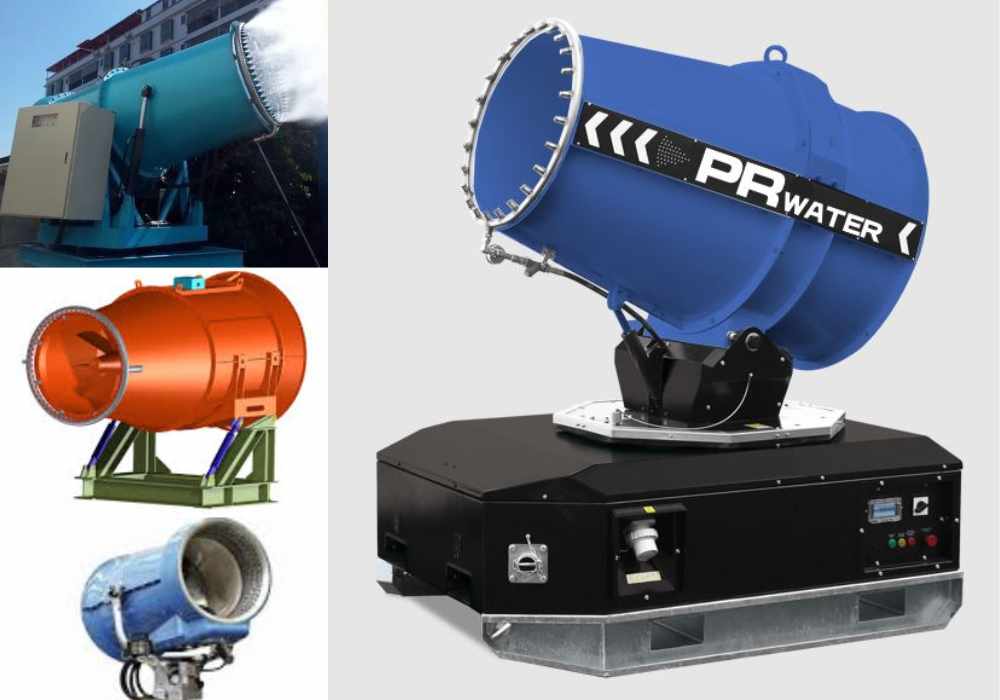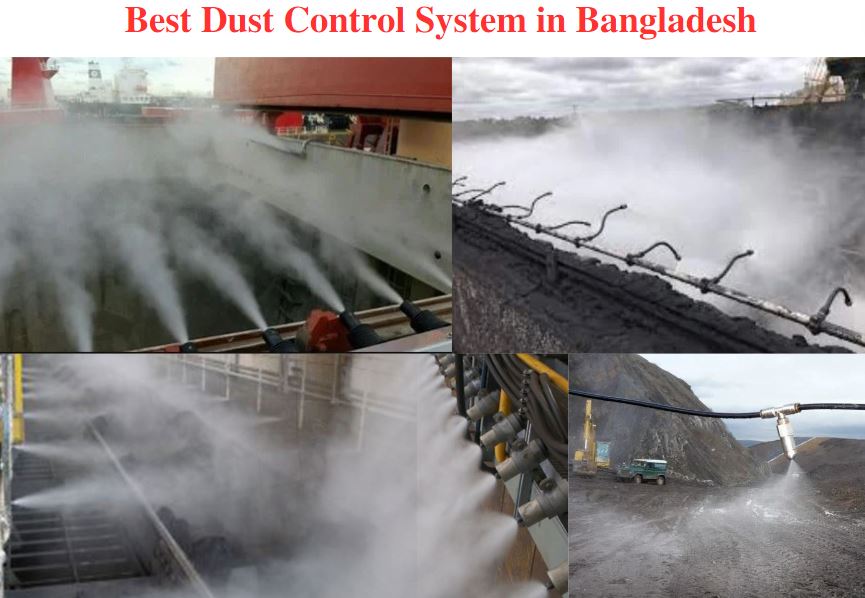Dust Suppression and Dust Control Systems in Bangladesh
Bangladesh bustling construction sites to sprawling garment factories, dust particles dance in the air, posing a significant threat to public health, environmental integrity, and industrial efficiency. But fear not, for amidst the dusty haze, innovative dust suppression systems are emerging, offering a breath of fresh air and a path towards a cleaner, healthier future.

Understanding the Dust Dilemma
Before diving into solutions, let’s unveil the culprits behind the dust storm. Construction activities, brick kilns, garment factories, coal-fired power plants, shipbreaking yards – these are just a few of the major dust generators in Bangladesh. Each industry presents unique challenges, demanding tailored dust control solutions.
Dust Busters a Weaponry of Solutions:
Now, onto the heroes: dust suppression systems. Here’s an arsenal of effective options:
- Construction Dust Control: Imagine construction sites without the dust plume? Wet suppression systems, using sprinklers or water cannons, are a classic yet effective solution. For more targeted control, misting cannons create a fine fog, suppressing dust without soaking the ground. For mobile operations, truck-mounted suppression systems offer flexibility.
- Brick Kiln Dust Suppression: Traditional brick kilns are notorious dust emitters. Bag filter systems capture dust particles, while wet scrubbers use water to trap dust and pollutants. Electrostatic precipitators offer advanced filtration for cleaner emissions.
- Garment Factory Dust Collector: Tiny fabric fibers pose a health hazard in garment factories. Industrial dust collectors with bag filters or cartridge filters capture these particles, ensuring a cleaner work environment. Downdraft tables provide localized dust control at workstations.
- Road Dust Control: Dusty roads not only create a nuisance but also contribute to respiratory problems. Mechanical sweepers collect loose dust, while water spraying trucks suppress dust formation. Chemical dust suppressants offer long-lasting solutions for high-traffic roads.
- Coal-Fired Power Plant Dust Control: Power plants need robust dust control measures. Electrostatic precipitators are widely used to capture fine particles from flue gases. Fabric filters offer an alternative for smaller plants. Wet scrubbers can be used for additional pollutant removal.
- Shipbreaking Yard Dust Control: Shipbreaking activities generate metal dust and asbestos, posing serious health risks. Wet suppression systems with spray bars and fog cannons control dust at source points. High-efficiency particulate air (HEPA) filters in ventilation systems further protect workers.

Location
Dust suppression needs vary across Bangladesh’s diverse landscape. Dhaka, the bustling capital, requires targeted solutions for construction and traffic dust. Chittagong, a major industrial hub, demands robust systems for shipyards and power plants. Khulna, known for its brick kilns, needs efficient dust control technologies. Rajshahi and Sylhet, with their agricultural activities, might benefit from dust suppression on rural roads.
Beyond the Dust Cloud the Benefits:
Implementing effective dust suppression systems yields a multitude of benefits:
- Improved Air Quality: Reduced dust means cleaner air, leading to better public health and reduced respiratory illnesses.
- Environmental Protection: Dust control mitigates environmental damage and protects ecosystems.
- Compliance with Regulations: Adherence to environmental regulations avoids hefty fines and legal issues.
- Enhanced Productivity: Dust-free workplaces lead to improved worker productivity and reduced absenteeism.
- Cost Savings: Dust suppression can reduce cleaning costs and equipment maintenance expenses.

Embracing a Dust-Free Future:
Combating dust pollution requires a multi-pronged approach. Government regulations and incentives can encourage wider adoption of dust suppression technologies. Raising awareness about the health and environmental impacts of dust is crucial. Collaboration between industries, research institutions, and communities can foster innovation and knowledge sharing.
Bangladesh is at a crossroads. It can choose to succumb to the dust devil or harness the power of effective dust suppression systems. By embracing these solutions, the nation can pave the way for a cleaner, healthier, and more productive future, leaving the dust devils behind in the swirling sands of time.
FAQ
What are the main challenges of dust pollution in Bangladesh?
Dust from construction, brick kilns, industries, and unpaved roads significantly impact air quality, causing respiratory issues and environmental damage.
Why are dust suppression systems important?
These systems improve public health, protect the environment, comply with regulations, enhance productivity, and save costs.
What are the different types of dust suppression systems?
Options include wet suppression, misting cannons, bag filters, cartridge filters, downdraft tables, mechanical sweepers, chemical suppressants, and electrostatic precipitators.